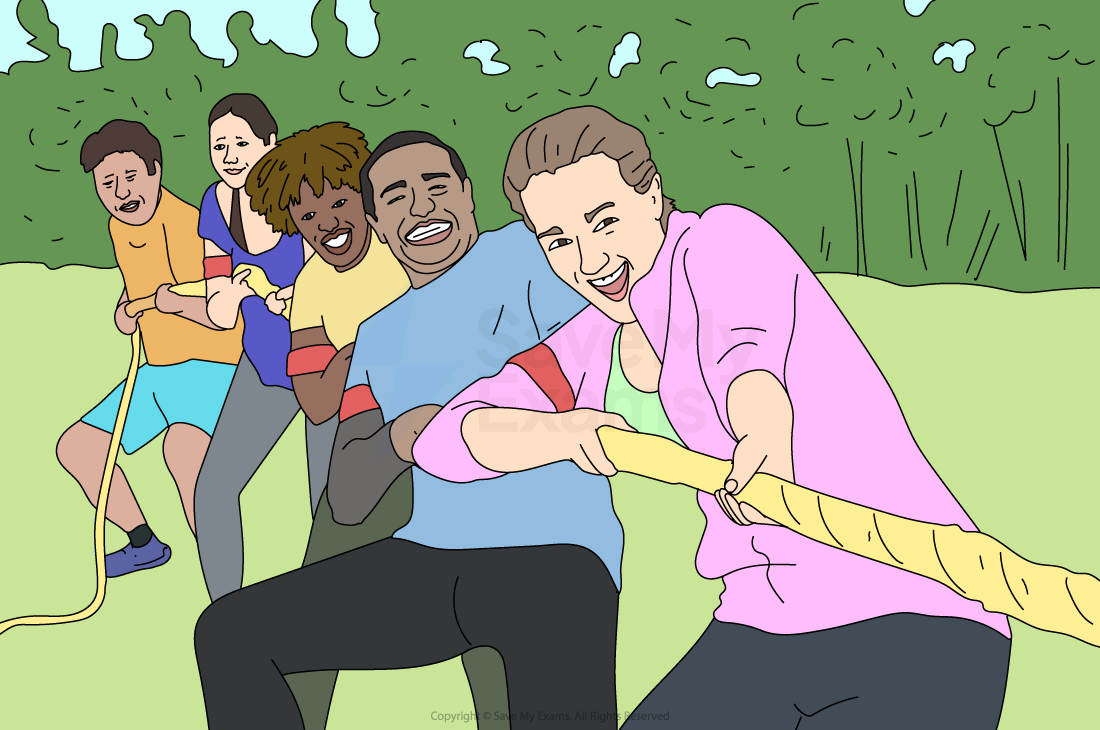Social loafing
- When someone is part of a crowd/group they may put less effort into a task than they would have done if they had performed the task alone
- This is known as social loafing
- Similar to deindividuation, when someone is part of a crowd they can ‘hide’ i.e. their lack of effort may go unnoticed
- An early piece of research by Ringlemann (1913) found that:
- People pulling on a rope exert less effort as more people join their team
- An individual pulling alone will expend around 98% of their full pulling potential
- Two people pulling equals 93% potential, dropping to 85% when three people pull
- By the time 8 people have joined the team the individual’s effort is likely to have gone down to 49%
- The results of the above study can be summed up as the Ringlemann effect
- Ingham et al. (1974) investigated the Ringlemann effect:
- The researchers were interested in whether the decrease in effort was due to loss of coordination or motivation
- Ingham concluded that the effort decrease was due to loss of motivational
- Thus, the Ringlemann effect is an example of social loafing
- Latane et al. (1979) investigated social loafing as follows:
- Participants were asked to clap and shout alone, with one other person, or in a group of six
- The findings of this study support the Ringelmann effect
- By the time six people were involved there was only 40% of the average individual effort shown
- Social loafing may occur for the following reasons:
- Thinking 'No one else in the group is committed to this task so why should I be?'
- Not wanting to be ‘used’ by the others
- Assuming that others will cover up for your own lack of effort
- Thinking ‘My own individual effort isn’t going to make that much difference’
- Interestingly, if people know that they are being watched, observed, monitored etc then their effort increases.
Social loafing diagram

How much effort would you put in? 100%? Or…less?...
Exam Tip
Ringlemann’s research is VERY old and has been lost! So, in your AO3 be sure to mention - if the question is suitable - the issue of TEMPORAL VALIDITY: should we still be relying on a study that is over 100 years old and can’t even be located any more?

